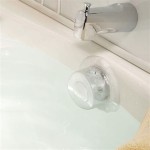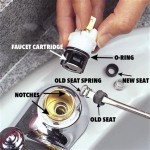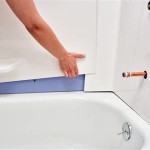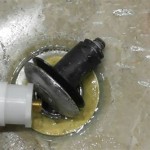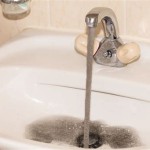How To Clean Dirt Stains Off Bathtub Drain
Bathtub drains are notorious for accumulating dirt, grime, and soap scum. This buildup can not only be unsightly, leading to noticeable stains, but also potentially contribute to slow drainage or even clogs. Addressing these stains promptly and effectively is essential for maintaining a clean and functional bathroom. This article provides a detailed guide on how to remove dirt stains from bathtub drains, covering various methods and preventive measures.
The accumulation of dirt and grime around a bathtub drain is a multifaceted issue. Hair, soap residue, dead skin cells, and mineral deposits all contribute to the problem. These materials gradually adhere to the drain surface and the surrounding area, creating a breeding ground for bacteria and mold. Over time, this accumulation hardens and forms stubborn stains that are difficult to remove with simple surface cleaning alone. Neglecting these stains can lead to more significant plumbing problems and necessitate more intensive cleaning procedures.
Regular cleaning is the most effective strategy for dealing with bathtub drain stains. Incorporating a drain cleaning routine into the overall bathroom cleaning schedule will prevent the buildup of dirt and grime, making it easier to maintain a clean and hygienic bathroom environment. The frequency of cleaning will depend on the usage of the bathtub and the hardness of the water, but a weekly or bi-weekly cleaning schedule is generally recommended for most households.
Preparation for Cleaning
Before commencing any cleaning procedure, proper preparation is crucial. This includes gathering the necessary cleaning supplies and taking precautions to protect both yourself and the surrounding area. The specific supplies needed will vary depending on the cleaning method chosen, but some common items include baking soda, vinegar, dish soap, a scrub brush, a toothbrush, a cleaning cloth, rubber gloves, and eye protection.
Wearing rubber gloves is essential to protect the hands from harsh chemicals and bacteria. Eye protection, such as safety glasses, is recommended when using cleaning solutions that may splash or splatter. It is also advisable to ventilate the bathroom by opening a window or turning on the exhaust fan to avoid inhaling potentially harmful fumes.
Before applying any cleaning solution, it is beneficial to remove any loose debris or hair from the drain. This can be done by using tweezers, pliers, or a specialized drain cleaning tool. Removing this debris will allow the cleaning solution to directly target the stains and grime, improving its effectiveness.
Cleaning Methods for Dirt Stains
Several methods can be employed to clean dirt stains from bathtub drains, ranging from natural remedies to commercial cleaning solutions. The choice of method will depend on the severity of the stains, the type of drain material, and personal preferences regarding cleaning products. It's always a good idea to test cleaning solutions in an inconspicuous area first to ensure they don't damage the drain's finish.
Method 1: Baking Soda and Vinegar
This is a popular and effective natural cleaning method. Baking soda is a mild abrasive that helps to loosen dirt and grime, while vinegar is a natural disinfectant that helps to dissolve mineral deposits and soap scum. The combination of these two ingredients creates a fizzing action that helps to dislodge debris from the drain.
To use this method, pour approximately one cup of baking soda down the drain, followed by one cup of white vinegar. Allow the mixture to fizz for about 30 minutes. The fizzing action helps to break down the dirt and grime. After 30 minutes, flush the drain with hot water. The hot water helps to remove the loosened debris and rinse away any remaining baking soda and vinegar. Repeat the process if necessary.
Method 2: Dish Soap and Hot Water
This is a simple and gentle cleaning method that is suitable for mild stains and regular maintenance. Dish soap is effective at dissolving grease and grime, while hot water helps to rinse away the dirt and debris.
To use this method, pour a generous amount of dish soap (about a quarter cup) down the drain, followed by a pot of boiling water. Allow the hot water to sit in the drain for a few minutes to loosen the dirt and grime. Then, flush the drain with more hot water to rinse away the debris. For stubborn stains, scrub the drain area with a scrub brush or toothbrush after allowing the dish soap and hot water to sit for a while.
Method 3: Commercial Drain Cleaners
Commercial drain cleaners are powerful solutions that are designed to dissolve tough clogs and stains. However, these cleaners often contain harsh chemicals that can be harmful to the environment and potentially damage plumbing if used improperly. It is crucial to follow the manufacturer's instructions carefully when using commercial drain cleaners.
When using a commercial drain cleaner, wear rubber gloves and eye protection to protect yourself from splashes and fumes. Carefully pour the recommended amount of cleaner down the drain and allow it to sit for the specified time. After the allotted time, flush the drain with plenty of water to remove the cleaner and any dissolved debris. Avoid mixing different types of drain cleaners, as this can create dangerous chemical reactions. Consider using enzyme-based drain cleaners, which are a more environmentally friendly alternative to harsh chemical cleaners.
Method 4: Hydrogen Peroxide
Hydrogen peroxide is a mild disinfectant and bleaching agent that can be effective for removing light stains and killing bacteria. It is a more environmentally friendly alternative to harsh chemical cleaners.
To use this method, pour about one cup of hydrogen peroxide down the drain. Allow it to sit for about 30 minutes to an hour. After the allotted time, flush the drain with hot water. For stubborn stains, scrub the drain area with a scrub brush or toothbrush after allowing the hydrogen peroxide to sit for a while.
Method 5: Borax
Borax, or sodium borate, is a naturally occurring mineral compound with cleaning and disinfecting properties. It can be used to help remove dirt stains and deodorize the drain.
To use borax, pour about 1/2 cup of borax down the drain, followed by a cup of boiling water. Allow it to sit for at least 30 minutes or even overnight. After the waiting period, flush the drain with hot water. This method can help dissolve soap scum and mineral deposits.
Scrubbing and Detailing
After applying a cleaning solution, scrubbing the drain area is often necessary to remove stubborn stains. A scrub brush with stiff bristles is ideal for this purpose. A toothbrush can be used to reach tight corners and crevices.
When scrubbing, apply firm but gentle pressure to avoid damaging the drain material. Use a circular motion to loosen the dirt and grime. Rinse the area frequently with water to remove the dislodged debris. Pay particular attention to the edges of the drain and the surrounding area where stains tend to accumulate.
For drains with intricate designs or hard-to-reach areas, a cotton swab or a small brush can be used to apply cleaning solution and scrub the area. This allows for more precise cleaning and ensures that all surfaces are thoroughly cleaned.
Preventive Measures
Prevention is always better (and easier) than cure. Taking preventive measures can significantly reduce the buildup of dirt and grime in bathtub drains, minimizing the need for intensive cleaning procedures.
Using a Drain Strainer: A drain strainer is a simple and inexpensive device that catches hair, soap scum, and other debris before it enters the drain. This prevents the buildup of these materials, reducing the likelihood of clogs and stains. Clean the drain strainer regularly to ensure that it is functioning effectively.
Regular Flushing: Regularly flushing the drain with hot water can help to prevent the buildup of dirt and grime. After each use of the bathtub, run hot water down the drain for a few minutes to rinse away any remaining soap scum and debris. This helps to keep the drain clear and prevent the formation of stains.
Avoid Pouring Oils and Grease Down the Drain: Oils and grease can solidify in the drain, contributing to clogs and stains. Dispose of oils and grease properly by discarding them in a container or wrapping them in newspaper before throwing them away. Avoid pouring these materials down the drain.
Using Natural Cleaning Products: Harsh chemical cleaners can damage plumbing and contribute to the buildup of mineral deposits. Consider using natural cleaning products, such as baking soda and vinegar, for regular drain maintenance. These products are effective at removing dirt and grime without harming the environment or plumbing.
Routine Cleaning Schedule: Establishing a routine cleaning schedule for the bathtub drain is crucial. Incorporating drain cleaning into the regular bathroom cleaning routine prevents the accumulation of dirt and grime. A weekly or bi-weekly cleaning schedule is generally recommended for most households.
By implementing these preventive measures, the accumulation of dirt and grime in bathtub drains can be significantly reduced, minimizing the need for intensive cleaning procedures and maintaining a clean and hygienic bathroom environment.

How To Clean Tough Stains From A Bathtub 4 Easy Methods

How To Deep Clean A Bath Cleaning Tips The Home Depot

How To Clean Bathtub Stains Diy Family Handyman

How Do I Take Off Hard Water From My Tub Hometalk

How To Remove Tub Stains Naturally With Non Toxic Homemade Cleaners
I Have Tried Every Bathtub Cleaning Available And Still Cannot Get The Bath To Turn White Again Stains Stay Even When Scrub With Bleach Does Anyone A

How To Clean A Bathtub Stains

How To Clean A Dirty Tub Quickly

How To Clean Tough Stains From A Bathtub 4 Easy Methods

How To Remove Tub Stains Naturally With Non Toxic Homemade Cleaners

